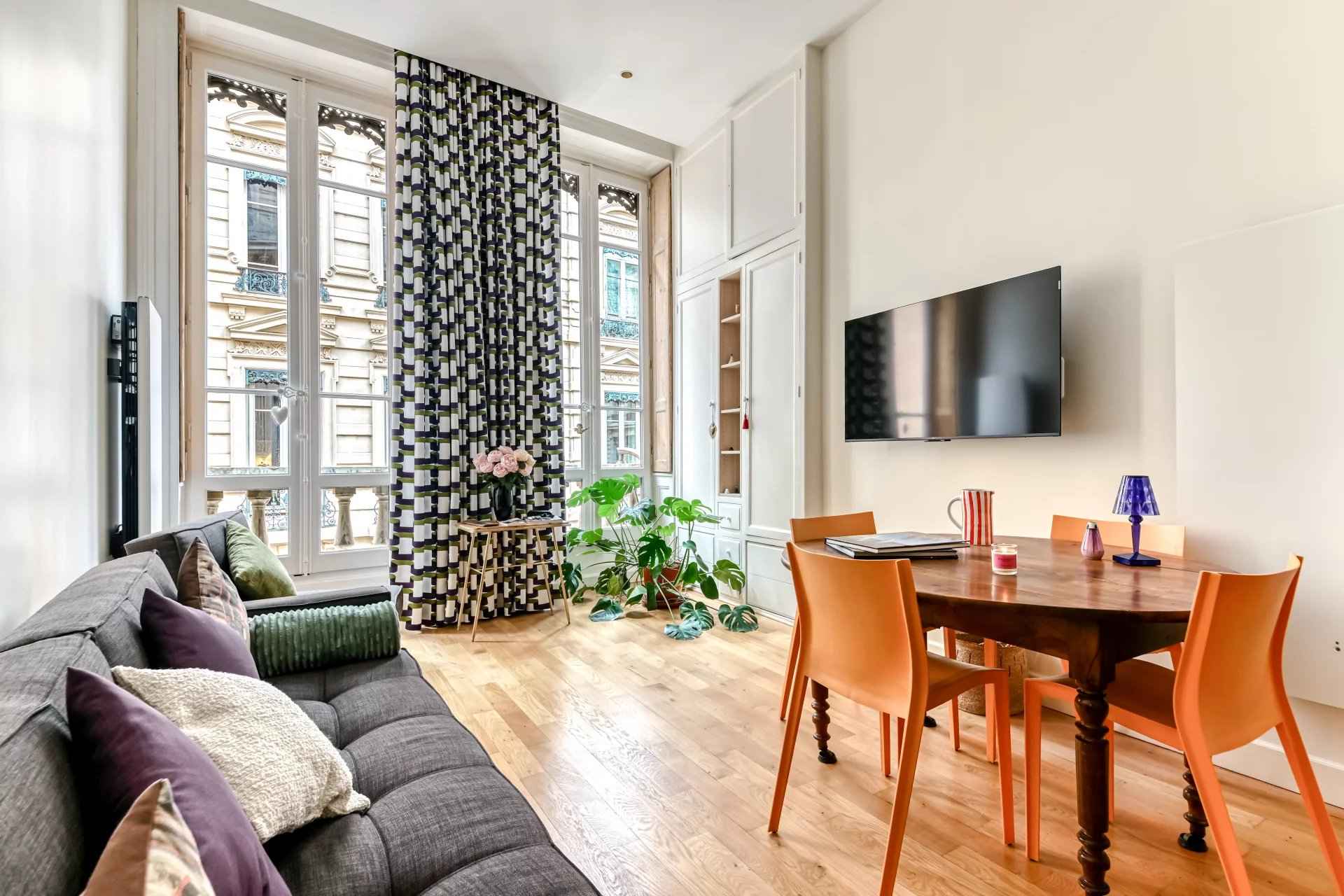[REAL ESTATE MARKET]
2025-08-28
PLU-H 2025 in Lyon: what homeowners and investors need to know
In Lyon, urban planning is evolving to meet the challenges of today: the need for housing, the climate emergency and land conservation. Against this backdrop, the PLU-H 2025, or Plan Local d'Urbanisme et de l'Habitat, marks a decisive turning point for property owners, investors, landowners and asset managers. Much more than a simple regulatory adjustment, it can have a profound impact on the value of a plot of land, the feasibility of a project or the profitability of an investment. In this article, the Barnes Lyon team will help you to understand the concrete impact of the PLU-H on your real estate projects, and to anticipate these changes.

PLU-H: what exactly are we talking about?
The PLU-H is an evolution of the Plan local d'urbanisme, which replaced the Plan d'occupation des sols (POS) in 2005. It is a strategic document that provides a framework for urban planning rules in all the communes of the Lyon Metropolitan Area.The PLU-H defines both the rules of constructability on a plot-by-plot basis and the major development guidelines. It applies to all applications for building or development permits, whether for individual residential projects or real estate developments.
In concrete terms, the PLU-H is based on several regulatory documents:
- The Sustainable Planning and Development Project (Projet d'Aménagement et de Développement Durable - PADD), which defines the major long-term urban planning orientations (housing, mobility, ecological transition, etc.);
- Zoning plans mapping the different zones (urban, to be urbanized, agricultural, natural, etc.);
- Very detailed written regulations, specifying maximum building heights, setbacks, land use coefficients, authorized uses, etc. for each zone;
- Development and programming guidelines (OAP) for areas undergoing change.
What are the main objectives of the PLU-H 2025 in Lyon?
The revision of the PLU-H aims to reconcile urban development with the region's environmental, social and economic imperatives. Key objectives includeCombating urban sprawl
Faced with the artificialization of land and the need to preserve natural areas, the PLU-H 2025 aims to reduce the consumption of space by densifying already urbanized areas. The aim is not to build uniformly in concrete, but to encourage construction where public facilities, schools, transport networks and shops provide a quality living environment.Increasing the housing supply
In view of population growth and the difficulties of accessing housing, the PLU-H 2025 aims to achieve controlled densification of already urbanized areas, particularly those close to public transport. This means encouraging higher-rise construction or the division of large plots to create new housing. The aim? Produce more affordable housing in tense areas, with reinforced social housing obligations, and strengthen functional diversity by authorizing more mixed uses (housing + business) in urban areas.Responding to the climate emergency
One of the major aspects of the PLU-H 2025 is the energy performance of buildings and their integration into the green and blue fabric. Ecologically exemplary projects can benefit from a building bonus of up to +20%, provided they include:- Green or solar roofs,
- Biosourced or high-performance materials,
- Optimized rainwater management,
- Careful landscaping.
"The PLU-H aims to develop the city while preserving its environment, promoting social cohesion and supporting economic activity. Thus, by encouraging urban densification around public transport routes, it encourages the use of public transport and reduces dependence on private cars. Similarly, by reserving space for public amenities (schools, parks, sports facilities), it helps to improve residents' quality of life and strengthen social ties within neighborhoods."
Which areas are concerned?
The PLU-H 2025 applies to all 58 communes of the Lyon Metropolitan Area, but zoning changes are not homogeneous. Each area benefits from specific treatment according to its level of urbanization, natural resources, public facilities and development prospects.The main regulatory zones remain unchanged in their nomenclature, but their limits and prescriptions have sometimes evolved:
U (urban) zones
U zones are the most directly concerned by densification. These are neighborhoods that have already been built up, where transport, schools and shops are already in place. These zones often benefit from height restrictions, particularly in well-served areas such as Villeurbanne, Lyon 7e or Lyon 8e.The AU (urban development) zones
The AU zones represent a strategic challenge. Some areas have been downgraded from AU to U, opening the way for real estate development. Others remain AU, but with more precise requirements in terms of facilities. Please note: these plots of land must be made constructible through a development procedure (planning permission, ZAC, etc.).N (natural) and A (agricultural) zones
N and A zones have been given even greater protection. It is now even more difficult to envisage construction projects in these zones, except for agricultural or public interest purposes. Certain plots of land on the edge of urbanized areas have thus lost their potential constructability.To remember : The same plot of land may be affected by several overlapping zoning or servitudes. It is therefore essential to cross-reference information from the zoning plan, written regulations and local urban planning documents to obtain a complete picture. Before any operation (sale, division, construction), check the classification of your plot on the Géoportail de l'urbanisme or on the official website pluh.grandlyon.com.
What are the concrete changes for property owners and investors?
If you own a plot of land or a house in Lyon, or if you're planning to invest in a property to be converted or subdivided, the PLU-H 2025 may change the value and feasibility of your project. Here are the main changes to bear in mind:More flexible height and density rules in certain sectors
The major new feature of the PLU-H 2025 is the introduction of a constructibility bonus. This allows you to exceed the maximum permitted height or add an extra storey (one storey maximum, not two) to your project, provided you meet the environmental performance criteria defined by the Metropole. This applies to both apartment buildings and single-family homes.This bonus applies mainly in urban zones (U) and in certain urbanization sectors (AU) with good transport links.
Increased vigilance over natural and agricultural zones
The PLU-H 2025 is committed to reducing the artificialization of land. As a result, the buildability of certain plots of land located on the edge of urban development or in areas classified as green or blue zones has been restricted, or even frozen altogether. These changes may have an impact on owners whose land, although previously suitable for urbanization, is now in an N or A zone, with extremely limited building rights.Please note! Land that was constructible yesterday is not necessarily constructible today. It is imperative to consult the new zoning, available on the Métropole urbanisme portal or at the town hall.
Tighter controls on land division and subdivisions
The Lyon subdivision PLU will also tighten controls on land division operations, particularly in predominantly suburban residential areas (PLU sectors U or UC).These measures include:
- Elimination or limitation of the implicit COS in certain sectors, to avoid the multiplication of inappropriate constructions,
- Increased minimum distances between buildings to preserve the quality of the urban fabric,
- Service and parking requirements to be taken into account from the outset of the project.
Expert advice:
Before considering dividing a plot or reselling a building lot, it's essential to have a regulatory feasibility study carried out. This will avoid any unpleasant surprises when planning permission is applied for.
What impact will this have on property value?
The PLU-H 2025 has a direct impact on the value of a property, whether it's a bare plot of land, a house to be renovated, or a rental investment project. It can significantly increase the value of a plot of land or an existing property, in either direction:An opportunity to increase the value of well-located plots
In areas where building rights have been reinforced, the market value of a plot of land can increase significantly, particularly if it becomes eligible for the bonus de constructibilité. This is of particular interest to investors and developers looking for scarce land in sought-after urban areas.For example, a 500 m² plot of land, previously limited to 150 m² of floor area, could now accommodate 180 or 200 m², which totally changes the profitability of a real estate project.
Good to know: In addition to the construction bonus provided for in the PLU-H 2025, certain project developers can benefit from a significant tax advantage: an exemption from development tax for operations to convert offices or vacant premises into housing, as part of the conversion of existing buildings.
This measure is designed to encourage the production of housing without consuming new space, with a view to reducing land consumption. It can be applied to projects located in zone U, particularly in areas with a high tertiary sector vacancy rate.
This exemption does not apply automatically: it depends on the municipality and the type of project. It is advisable to check with the town planning department on a case-by-case basis, and to seek advice on the appropriate legal and tax arrangements from a notary or specialist advisor.
A risk of devaluation for land on the outskirts
Conversely, land on the edge of a natural zone, or with poor services, may lose its value if the PLU-H 2025 reclassifies it as a non-constructible zone, or if environmental servitudes are reinforced (flooding, setback from a watercourse, etc.). This underlines the importance of reassessing your property in the light of the new regulations, in order to adjust your property strategy.In conclusion: anticipate to secure your projects
The Lyon 2025 PLU-H is both an opportunity and a demanding framework. It requires a fine-tuned reading of the new building regulations, but also opens up prospects for rational densification, land development and a concrete ecological transition. Anyone who owns, develops or manages property in the Lyon metropolitan area needs to read it carefully.At BARNES Lyon, we keep a close eye on local regulatory developments, so that we can provide our property owner and investor customers with precise advice. Our approach is based on a detailed knowledge of Lyon's sectors, a mastery of regulatory developments, and a network of specialized technical experts to support our customers in property analysis, asset enhancement and the identification of the best opportunities in the light of these new guidelines.
Whether you're looking to sell, build or transfer your property, we can provide you with an analysis of its potential in relation to the PLU-H 2025, and give you an up-to-date opinion of value, taking into account the urban planning context. Our ambition is simple: to help you make the right decisions at the right time, within a secure and sustainable framework.
Contact the experts at BARNES Lyon to discuss your requirements!
For further information, find out more about the timetable and official documents for the Lyon Metropolitan Area's PLU-H.

.jpg)

